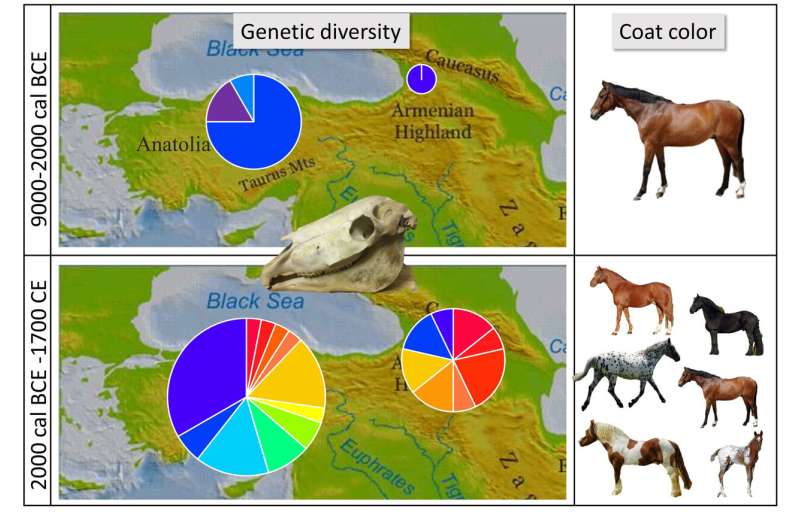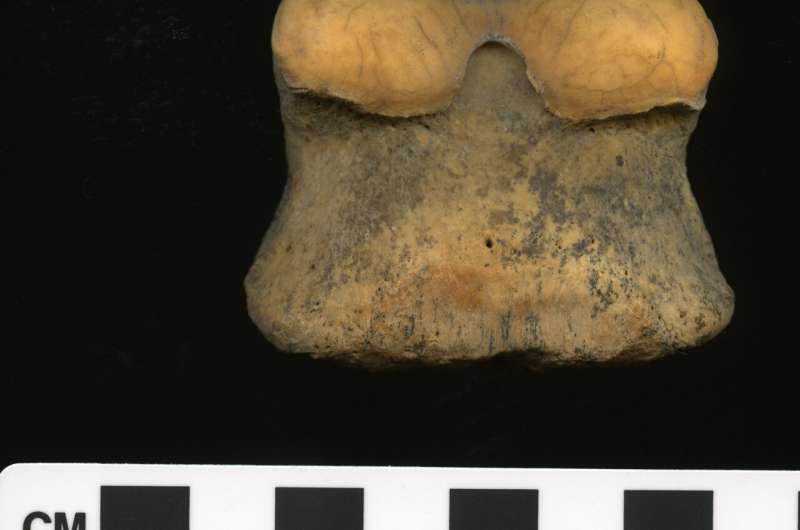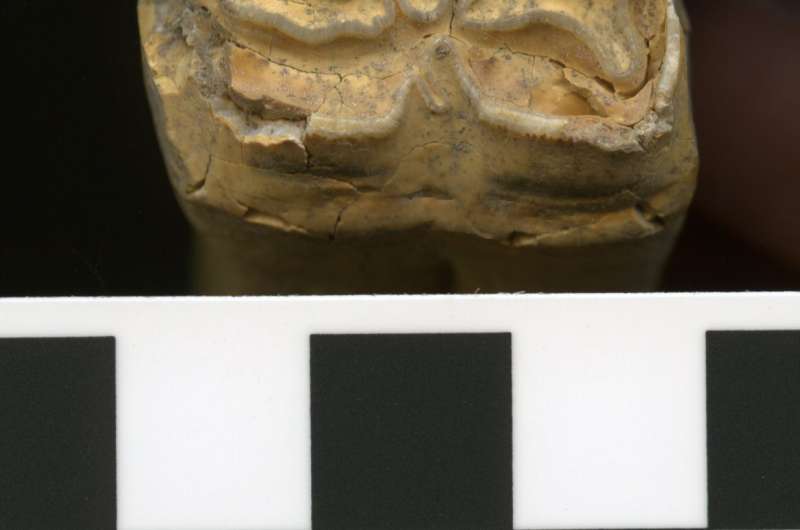September 17, 2020 report
Genetic testing suggests horse domestication did not begin in Anatolia

An international team of researchers has found via genetic testing that horse domestication very likely did not begin in Anatolia as has been thought. Instead, it appears more likely that horses were first domesticated in the Eurasian Steppe and were subsequently imported to both the Caucasus and Anatolia. In their paper published in the journal Science Advances, the group describes their exhaustive study of ancient horse remains from a host of locations in eastern parts of Asia, the Caucasus and Anatolia.
For many years, scientists have believed that the horse was first domesticated in Anatolia approximately 5,500 years ago. Anatolia is the peninsula also known as Asia Minor; today it makes up most of Turkey. In this new effort, the researchers have found evidence that suggests that horses were actually first domesticated in the Eurasian Steppe and were exported to Anatolia approximately 4,000 years ago, during the Bronze Age.
The work involved obtaining and genetically analyzing 100 equid remains that had been found at eight sites in Anatolia and six in the Caucasus (a region between the Black Sea and the Caspian Sea that is today mainly occupied by Armenia) dating back 2,500 to 11,000 years ago. Some of the remains were from domesticated horses, while others were from those that had remained wild. To learn more about their origins, the researchers conducted paleogenetic and morphological studies that included analysis of Y chromosome DNA, mitochondrial DNA and DNA markers that have previously been associated with coat color. Over time, domestication has led to changes in the coat color of horses. They found lineages present in modern domestic horses that appeared suddenly in 2,000 BCE horses (as opposed to showing up over time) which suggested that domestication had occurred elsewhere. A sharp change in coat colors also suggested horses had been brought to the region from somewhere else. The researchers suggest that the other location was likely north and west of the Caucasus, closer to the Black Sea—the exact site is still unknown.

The researchers also found evidence of imported domesticated horses being bred with wild Anatolian horses, and also donkeys. They found evidence of the earliest known mule in southwest Asia.

More information: Silvia Guimaraes et al. Ancient DNA shows domestic horses were introduced in the southern Caucasus and Anatolia during the Bronze Age, Science Advances (2020). DOI: 10.1126/sciadv.abb0030
Journal information: Science Advances
© 2020 Science X Network



















